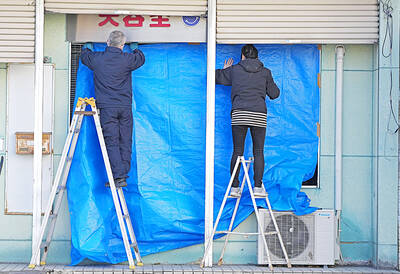Taiwan’s production value in the green energy sector is forecast to hit NT$1.15 trillion (US$35.9 billion) by 2015, an official in charge of energy affairs said yesterday.
Speaking at a seminar in Taipei on the era of low carbon emissions, Wang Yun-ming (王運銘), deputy director-general of the Ministry of Economic Affairs’ Bureau of Energy, said “green investment” now dominated the economic development agendas of many countries.
He cited statistics compiled by the Hong Kong and Shanghai Banking Corp as saying that the US government had set aside US$67.7 billion in its economic stimulus measures for developing clean and green energy, while the EU has committed 105 billion euros (US$146.97 billion) by 2013 and South Korea 50 trillion won (US$43.5 billion) over the next four years. Japan has also been considering a large budget for green energy.
Taiwan, for its part, will focus on solar power, light-emitting-diode lighting, wind power, bio-energy, fuel cells, energy information communication technology and electric vehicles, he said.
He said the production value of the local green energy sector will have increased from NT$160 billion last year to NT$1.15 trillion by 2015, attracting NT$200 billion in private investment and creating 110,000 jobs,
By that time, Wang said, with its backbone industries having shifted to areas featuring low-carbon emissions and high added value, Taiwan will be one of the leading countries in new energy technology development and production.

A small number of Taiwanese this year lost their citizenship rights after traveling in China and obtaining a one-time Chinese passport to cross the border into Russia, a source said today. The people signed up through Chinese travel agencies for tours of neighboring Russia with companies claiming they could obtain Russian visas and fast-track border clearance, the source said on condition of anonymity. The travelers were actually issued one-time-use Chinese passports, they said. Taiwanese are prohibited from holding a Chinese passport or household registration. If found to have a Chinese ID, they may lose their resident status under Article 9-1

Taiwanese were praised for their composure after a video filmed by Taiwanese tourists capturing the moment a magnitude 7.5 earthquake struck Japan’s Aomori Prefecture went viral on social media. The video shows a hotel room shaking violently amid Monday’s quake, with objects falling to the ground. Two Taiwanese began filming with their mobile phones, while two others held the sides of a TV to prevent it from falling. When the shaking stopped, the pair calmly took down the TV and laid it flat on a tatami mat, the video shows. The video also captured the group talking about the safety of their companions bathing

PROBLEMATIC APP: Citing more than 1,000 fraud cases, the government is taking the app down for a year, but opposition voices are calling it censorship Chinese Nationalist Party (KMT) Chairwoman Cheng Li-wun (鄭麗文) yesterday decried a government plan to suspend access to Chinese social media platform Xiaohongshu (小紅書) for one year as censorship, while the Presidential Office backed the plan. The Ministry of the Interior on Thursday cited security risks and accusations that the Instagram-like app, known as Rednote in English, had figured in more than 1,700 fraud cases since last year. The company, which has about 3 million users in Taiwan, has not yet responded to requests for comment. “Many people online are already asking ‘How to climb over the firewall to access Xiaohongshu,’” Cheng posted on

A classified Pentagon-produced, multiyear assessment — the Overmatch brief — highlighted unreported Chinese capabilities to destroy US military assets and identified US supply chain choke points, painting a disturbing picture of waning US military might, a New York Times editorial published on Monday said. US Secretary of Defense Pete Hegseth’s comments in November last year that “we lose every time” in Pentagon-conducted war games pitting the US against China further highlighted the uncertainty about the US’ capability to intervene in the event of a Chinese invasion of Taiwan. “It shows the Pentagon’s overreliance on expensive, vulnerable weapons as adversaries field cheap, technologically